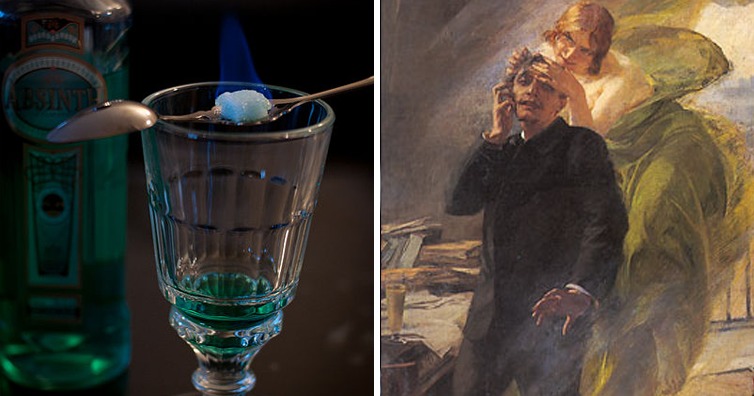Absinthe’s history is shrouded in mystery. Just ask someone “what is absinthe?” and their reply will be “it’s that drink that gets you trippin’ and makes you mad.” We’ve grown to believe that this delicious, anise-flavored spirit is hallucinogenic but the reality couldn’t be further from the truth.
Well, because here at I’m A Useless Info Junkie we love getting our facts straight (and we also love absinthe), here’s the real reason why absinthe was banned.
It all has to do with the wine industry’s interests. (the article continues after the ad)
Up until 1850s, wine and wine-based products like cognac were king. If you were to order a drink, it would most probably be either a wine or a cognac. But in the mid-19th century, phylloxera hit the French vineyards destroying the vast majority of them, in what is known as the Great French Wine Blight. As a result, for the years to come, the wine production was reduced dramatically.
Looking for a substitute, people in the United States turned to rye whiskey (yes, the Great French Wine Blight played a significant role for whiskey’s expansion). In Europe, people started tasting a high-proof alcoholic drink that was popular among artists; absinthe. It was cheap, widely available and extremely favlorful.
When phylloxera was over and wine production went to its normal levels, winemakers soon realised that their sales went down as many of the people that used to be their customers, were now drinking absinthe. Now you have to understand, that advertising at the time was pretty much nonexistent. So, what did they decide to do in order to get their customers back? Demonize absinthe!
And so they did. Inspired by the fact that a lot of the artists who were drinking absinthe were known to have psychological disorders, they started spreading the myth that it was the drink itself that made them mad. A research by French psychiatrist, Dr. Valentin Magnan, also helped, as it concluded that animals who used thujone and wormwood oil (two of the main ingredients of absinthe) had convulsions and eventually died. Of course, the problem with this research was the fact that it was never peer reviewed or verified and also no other research ever came to the same conclusion.
Nevertheless, the wine industry used these two weapons and it’s massive political influence to fight absinthe. They pushed for its ban which eventually went into effect throughout Europe between 1909 and 1914 and in the United States in 1912. Without serious competition now out of the way, wine and cognac dominated the market once again.
The ban lasted for 100 years. Since 2007, absinthe is legal in all the countries that alcohol consumption is legal.
If you like what you read, then you will definitely love this one: Here’s Why It Wasn’t Illegal To Drink Alcohol During Prohibition
Photo: Wikimedia, ROBERT HUFFSTUTTER / Flickr
Photoshop: I’m A Useless Info Junkie
Sources: Absinthe: What’s it all about? – Episode #658 | Why Was Absinthe Banned For 100 Years? A Mystery As Murky As the Liquor Itself | The Wormwood Society Absinthe Association

